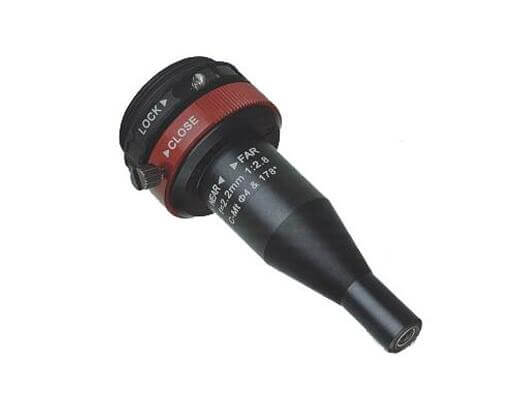Overview of Pinhole Lenses
What Are Pinhole Lenses?
Pinhole lens is unique gadgets built with a tiny opening. They look like a little hole. Unlike regular lenses with fancy glass setups, these use light bending through a small gap to cast a picture. This basic build skips extra parts. It gives a limitless focus range too.
Key Features of Pinhole Lenses
A standout trait of pinhole lenses is their knack for keeping everything in view sharp. Stuff near or far stays clear at once. Plus, they’re small and light thanks to their simple makeup. That makes them great for tight spots. No glass bits mean no color blur or twisty issues either.
Common Applications of Pinhole Lenses
Pinhole lenses pop up in all sorts of places due to their odd perks. You’ll see them in spy setups needing sneaky watch. Their tiny size and broad focus fit security cameras tucked away. They also help in science labs and picture-taking gear where easy and exact work matters.
Overview of Standard Lenses
What Are Standard Lenses?
Standard lenses differ from pinhole ones. They’re tricky setups with lots of glass or plastic pieces. These bits focus light onto a sensor or film. They come in all shapes and sizes for different picture jobs. You spot them in photo snaps, video shoots, and factory tasks.
Key Features of Standard Lenses
Standard lenses dish out top-notch pictures with crisp, clean looks all over. They’ve got tweakable openings. You can adjust how much light comes in. That lets you play with blurry backgrounds or other cool tricks. They can be made for special gigs too, like close-up shots or wide views.
AICO Electronics Limited rolls out a wide batch of solid standard lenses for factory use. Take their 2/3” Format Fixed Lenses—they pack sharp detail up to 150lp/mm (5MP). You get fine control over light settings. With high-end tools like ZYGO GPI-XP Interferometer and Optikos Lens Check Lens Measurement Instrument, AICO keeps quality sky-high.
Common Applications of Standard Lenses
Standard lenses get around plenty thanks to their flex. In photo and video work, they grab rich shots with artsy wiggle room. Factories use them in vision rigs for checking stuff and running machines. Doctors lean on them for clear peeks in health checks too.
Technical Differences Between Pinhole and Standard Lenses
Aperture Size and Light Transmission
Pinhole lenses stick out with their super-small opening—just a wee hole letting light slip through. This setup caps how much light gets in. That makes them weak in dim spots. The tiny gap skips fancy glass though, keeping things simple. Standard lenses, though, have openings you can shift. You can open them wide or pinch them tight to manage light. This bendability lets them shine in all kinds of brightness, from shadowy rooms to sunny yards.
Image Quality and Sharpness
Pinhole lenses spit out pics that feel softer. They don’t hit the crisp mark like standard ones. Light bends through that little hole and muddies detail a bit. Standard lenses, on the flip side, use a bunch of glass bits to cut flaws and boost clarity. AICO Electronics Limited, for one, crafts standard lenses hitting 200lp/mm (10MP). That’s razor-sharp for factory jobs. Tools like ZYGO GPI-XP Interferometer help them nail top performance.
Field of View and Depth of Field
Pinhole lenses keep everything in focus, near or far. That’s a huge depth range. But it narrows what you see side to side. Standard lenses give you options. You can tweak their length and opening for effects. Want a blurry back or a wide sweep? They’ve got you. That makes them handier for creative or pro picture needs.
Functional Advantages and Limitations
Advantages of Using Pinhole Lenses
Pinhole lenses shine where simple and small rule. Their light build fits secret watch systems or lab tests needing no optical fuss. That endless focus range keeps all scene bits sharp too. It’s a win for stuff like tiny-scope work or pinhole snaps.
Advantages of Using Standard Lenses
Standard lenses bring big flex and killer picture quality. You can tweak their openings for exact light and focus control. That suits all kinds of photo styles and factory needs. AICO Electronics Limited’s 2/3” Format Manual Iris Fixed Lenses, for example, nail high-def shots across vision rigs, health scans, and safety watches. They hit 150lp/mm (5MP) with spot-on light tweaks for peak results.
They can also get tailored for close-ups or far-off zooms. This adaptability makes them must-haves from movie-making to auto-check systems.
Limitations of Each Lens Type
Pinhole lens keep it cheap and easy, but they’ve got downsides. Low light flow flops in dark setups. You need long waits to catch shots, which stinks for moving scenes. Their fuzzier pics limit them where detail’s king.
Standard lenses rock but have hitches too. Their tricky build makes them chunkier and pricier than pinhole ones. Plus, you’ve got to handle them right to dodge glare or color slip-ups from misaligned bits.
Frequently Asked Questions
How do pinhole lenses differ from standard lenses in terms of construction?
Pinhole lenses use a plain tiny hole, no fancy optics. Standard lenses pack multiple glass pieces for exact imaging.
Are pinhole lenses suitable for professional photography?
Nope, they usually miss the sharpness and wiggle room pros need. Their simple setup holds them back.
What industries benefit most from using standard lenses?
Fields like health imaging, machine vision, and safety watches lean hard on standard lenses for top output.
Does AICO Electronics Limited provide solutions for custom lens requirements?
Yep, AICO Electronics PTE. LTD. whips up custom lens fixes for specific factory gigs fast.
Check out how AICO Electronics Limited keeps pushing optical tricks for stuff like automotive lens , machine vision lens and wide-view safety systems. With sharp R&D skills, they deliver primo gear hitting global marks!
